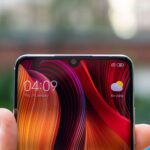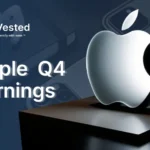In the lightning-paced world of technology, smartphones are one area where competition is fierce. Recently, however, Apple’s unveiling of having sold over a billion iPhones was quickly overshadowed by news from IDC (International Data Corporation). For the second consecutive time, IDC reports show that Samsung has extended its lead over Apple in terms of smartphone sales.
With a robust 343.3 million smartphones distributed globally in the second quarter of 2016, the results offer a unique insight into the state of the smartphone industry. Apple shipped 40.4 million iPhones, which represents a significant 15.0% year-over-year decline from the 47.5 million units shipped last year. On the other hand, Samsung’s performance was on the uptick, delivering a robust 77 million phones within the same period.
The reasons behind Samsung’s booming numbers go straight back to its Galaxy S7 and Galaxy S7 Edge models. Their strong sales performance bolstered Samsung’s lead, allowing it to almost double the iPhone’s sales figures. The coming months could prove interesting as talks of the iPhone 7’s launch gather momentum. There’s also the more affordable iPhone SE whose pricing has recently decreased, although the extent of its impact on iPhone’s overall performance remains to be seen.
When it comes to market share, Samsung ended the quarter on a high note with 22.4%, leaving Apple trailing at 11.8%. Not too far behind, China’s Huawei snatched the third place with 32.1 million phones shipped globally. With this, Huawei managed to secure a market share of 9.4%. Among the top three, Huawei experienced the most substantial growth with a year-on-year increase of 8.4%. Samsung also showed a decent growth of 5.5%, however, Apple’s market share saw a decline of 15%.
Analysts have long predicted that iPhone sales would eventually plateau, and it seems that the fierce competition from other Android-based vendors has played a significant role in realizing this prediction, as evident in IDC’s results.
For the layman, the impacts may appear minimal, but seeing the shift in smartphone popularity and sales is an essential barometer of current technological trends. While fluctuations in sales and market share may be natural, they speak volumes about consumer preferences and market trajectories.
Whether we’re on the cusp of a changing tide in the smartphone industry is still uncertain, but one thing is for sure: we’re certainly in the midst of an electrifying time in technology.
This year’s Q2 results underscore the dynamic rivalry that exists among the leading players in the smartphone market. It remains fascinating to watch how these companies plan, strategize, and maneuver to stay competitive.
[Image Source: XeeTechCare](https://www.youtube.com/channel/UCTqMx8l2TtdZ7_1A40qrFiQ)
This article was updated in 2025 to reflect modern realities.
Discover more from TechBooky
Subscribe to get the latest posts sent to your email.







